
If you have an e-commerce website, or utilize content marketing, Web Push Notifications could be the next step for you to keep re-engaging with your website visitors, allowing you to reach them on any device, without them needing to hand over any personal data.
We’re all familiar with regular push notifications: the banner notifications that come from the apps on your phone, such as a missed call, unread text notification, BBC news update, new match on Tinder. If you have enabled notifications for any app, that app is able to use the phones operating system to send you messages. Everyone with a smartphone knows how engaging these notifications are, grabbing your attention in real-time, with direct access to your screen no matter what you’re doing.
It is commonly believed that this type of customer-engagement marketing is limited to those who have a ‘native app’ (that is, an app that customers have to download onto their phone from the app store in order to access it’s features). However, with the efforts being made by Google and Apple to explore and move towards ‘progessive web apps’ (apps that you don’t need to download from a store, more like a website), more and more of the features of smartphone operating systems are available to improve and enhance your website or online marketing… without needing to develop a native app.
In the same way that when you install a native app on your smartphone your app asks the user for permission to access notifications features, your website can ask new visitors for approval to send them website push notifications. Once this ‘visitor’ has become a ‘subscriber’, you can then send them notifications from the website in the form of customised text, URL links, and images.
Web push notifications instantly offer some big improvements from other forms of notification marketing and native app notifications (e.g. newsletters, SMS).
You might now be wondering how to use push notifications in your marketing strategy. While the technology is not that new any more given it’s been used on every smartphone over the past 10 years, it’s introduction into a new medium (website) does mean that we can be a lot much more creative.
These are just a few of the more obvious ways to implement push notifications. But with the wealth of creative minds in our industry it is likely to be used in new and exciting ways. We have already created a push notification for a green lobbyist client, that allows them to send push notifications on their articles, but also send out real time smog warnings for affected cities or other urgent messages.
If you would like to talk more about push notifications and now it could improve your website marketing, please do not hesitate to get in touch.
Anyone who watched Netflix’s The Social Dilemma this month might have found themselves checking their average daily screen time, and they’d be right to. You better check yours now.
The conversation around the disruptive social potential of technology and social media is not a new one, with data-collection scandals such as Cambridge Analytica, statistics on mental health, and misinformation / fake news (to name a few) all daring us to confront social media with a critical eye. But this documentary – led by Silicon Valley minds such as former design ethicist at Google Tristan Harris, and co-creator of the Facebook “like” button, Justin Rosenstein – confirms that such technology companies are actively chasing our physiological tendency to addiction, in order to profit, and exposes social media’s potential to disrupt our democratic rights.
This is the first time that the seemingly obvious points – technology as dystopia, media and brainwashing – have been fed to the masses in a convincing documentary, and is now a forerunner of mainstream conversation about tech. The documentary has taken viewers to a new level of panic, asking people to delete their social media accounts on the premise “how can you wake up from the Matrix, when you don’t know you’re in the Matrix?”
It is more than somewhat ironic that the documentary is aired on Netflix, the online streaming platform which achieves its success through manipulation of the Attention Economy. And while it might work for a while, as people determinedly delete their social media accounts, I can’t see this bringing platforms to a steady halt. More likely, people will be re-downloading their apps as soon as they need to reconnect with someone, introduce a new market, or sell a product. In the same way, The Social Dilemma is not all doom and gloom: it sees a technological future and calls for a new approach to the conversation around technology, one that demands humanity and ethical responsibility.
Which brings us to our social dilemma: what does this global conversation mean for digital marketing strategies? Businesses nowadays cannot denounce their social media presence entirely without risk of losing out to their market competitors. As the runaway train hurtles down the track, the livelihoods of many of our businesses depend upon jumping on it, or else getting left behind.
Instead, then, it might be an idea to re-examine the pros and cons of the social media sites that you or your business uses. Is it necessary to be on six platforms? Could you limit it to only the relevant ones? Is that Twitter and Linked In, or Facebook and Instagram? Social media companies work by ensuring that you are the product (as the saying goes, if you’re not paying for a product, you’re the product). So, if you want to be making the most of social media marketing, chances are you’ll need to give it a budget – make sure this is necessary and worthwhile. It is also probably worth thinking about how strategies used by social media giants might be affecting your own employees. They are at the mercy of this too, might they be scrolling against their will, wasting time? In short, which platforms are worth paying for, and how can you make sure you navigate them ethically and efficiently?
If you’re anything like me, you will think that the conversation around social media doesn’t apply to you, that you’re under control and not giving any unwanted attention to platforms, and that your business isn’t affected. But next time you find yourself checking your Gmail account for no particular reason, or getting an unnecessary notification and opening it, think again. In this world, we are all affected by social media, directly or indirectly, no matter how connected we are. The internet is a force for good, and can remain so if we channel it correctly. We just need to be more mindful of how we use it (and how it uses us).
When we consider that most users access the internet and websites via their phones, it’s no surprise that the way we design our mobile layouts and produce our SEO strategies is important for mobile.
According to studies, consumers spend more than fifteen hours per week searching using a mobile device and a massive 93% of mobile users who search for a product via a search engine make a direct purchase, compared to those who go directly to a website. Below we have listed some easy tips to improve your SEO game on mobile.
A well-built website will do wonders for your SEO in general. We can often find that when it comes to load times, these are significantly slower on a mobile device than a desktop. This is because many websites were built specifically for the desktop model and mobile devices spent a lot of the time loading the full desktop content, even though it didn’t fit or suit the page. This directly affects your sales – if a website doesn’t load quickly then the potential customer will leave and you will lose a sale. Google recommends that responsive design is used for mobile websites so you should ensure this is the case for your website!
Every successful mobile strategy means developing a website that is revamped and specific to mobile search. Most of the highest trafficked websites, and those who are focused on good user experience, have fully developed mobile versions of their websites to ensure mobile users have a top experience when browsing. Remember that Google uses user experience as one of its ranking conditions, so ensuring a well-built mobile site will boost your SEO rather than sacrifice it.
If your business is one that relies on the business of locals to your area, particularly smaller businesses, then it’s vital that you ensure that you use local SEO. Register with Google My Business and ensure your business uses local web directories. Reviews are also useful to enhance your rankings.
If you’re interested updating your web design or digital marketing strategy, then get in touch with us today!
Today there are a wide variety of online newsletters with many different ways to design and build them, but which one will allow you to speak to your audience most effectively and get them engaging with your content, find out how to create an email newsletter to increase your sales?
Newsletters are useful to businesses in that they are cost-effective compared to sending physical items. Another advantage of this is monitoring the activity of the newsletter such as what time of day it is opened and how long it is looked at for.
This allows you to learn when your audience are most active with their emails and how you can improve your approach to increase the open rate for the future. An increase in clicks means more engagement with your business which fosters recognition.
In 2019 email marketing is still a marketing channel that is worth investing time in as it continues to deliver a high ROI despite the popularity of social media marketing campaigns that have become more prominent in recent years.
The Newsletter Guide
Step 1: Your audience, lists and the right platform for you
Step 2: Write clear headlines
Step 3: Less is more
Step 4: Design
Should your E-Newsletter be in a plain-text form or more creative like an HTML email? HTML stands for Hypertext Mark-up Language and is the way web pages and email templates are coded so that information such as text is styled and images are added. Plain-text emails on the other hand are written with limited visual options such as bold or italic text.
While it has been said that people on first impressions prefer visual HTML emails the evidence supports a minimal design getting more responses and avoids the spam filter. This is really good news for those of us who ‘don’t pride ourselves on being great designers.
This is not to say that HTML newsletters should be avoided all together, it depends on the audience you are sending it to. For e-commerce companies the HTML format is vital for promoting products and driving sales, one way you can see what resonates best with your audience is to conduct an A/B test - Sending half your audience the HTML style of newsletter and the other half the plain-text style. If you decide to use an HTML format it’s vital that your logo, brand colours and other visual aspects are consistent to help your newsletters appear legitimate, professional and recognisable as you!
Step 5: Optimise
With people using more portable devices like phones and tablets to view their emails it’s crucial that your content is clearly visible on all devices. A way of achieving this is to adopt a single column grid layout. Using a lot of white space can keep the design minimal and making buttons or Call to Actions larger so they are easier to select.Watch your image count. Continuing on from the HTML subject in ‘Step 3 Design’, a lot of images can be seen as spam by email filters.A way of reducing the load time of your newsletter is to compress the size of the images. A quick and easy way of doing this is using www.tinypng.com. Tiny PNG is a website that takes your PNG or JPEG images and reduces the size of them. Including these smaller sized images in your newsletters will make the loading time of your content much faster.
Step 6: Timing

When is the best time in to send people emails for more engagement? The best time depends on the audience the newsletter is aimed at.
Step 7: Social media
Summary
KNOW YOUR AUDIENCE. Everyone’s newsletter will be different depending on the demographic. From the time you send your newsletter, to how many images you include, always create your content with your audience in mind. If you are unsure what will work best, try an A/B test to see how people respond and alter accordingly.
For an easy to use mail system it may be worth having a look at Mail Chimp and Campaign Monitor. And, if you need further help with your newsletter why not call one of our team on 01394 615615 who are more than happy to help get you started or answer any queries.
Attributing credit to marketing efforts has been the strife of marketers for decades. Luckily, we’ve gained a few tricks on our way and we can give you a great insight into the health of your campaign. In addition to this, with the key metrics available from industry leading tools, we can give you an even deeper look into your digital performance.
Traffic isn’t worth anything if users aren’t interacting in a way that is beneficial for your business. We track your website’s goals and optimise to make the completion of them more likely. For websites with high traffic we use A/B multivariate testing to isolate features that are holding back your goals. For smaller scale CRO we use tools like SessionCam to see how individuals are navigating around your page. There is always room for improvement and we look to squeeze every last bit of improvement out of your website.
The right KPIs (key performance indicators) can paint an accurate picture of your digital performance and inform future strategy. We’ll customise your reports to give you the most accurate representation of reality as possible. If you need a hand interpreting our performance reports we’ll be more than happy to give you a realistic explanation. Calculating ROI (return on investment) involves translating performance metrics into revenue. Although challenging, through clever attribution models and combining data sets we can give you reality driven assurances that your digital investment is paying off.
All useful information about your site lives here. Google Analytics is the perfect tool (in the right hands) to drill down into the data and mine precious insight that can be fed back into your online strategy.
Read more from our Digital Strategy Director, Tim, about predictive analytics.
Marketers can’t ignore the fact looking at data trends and how our society is evolving around technological advances influencer marketing is becoming a mainstream marketing channel.
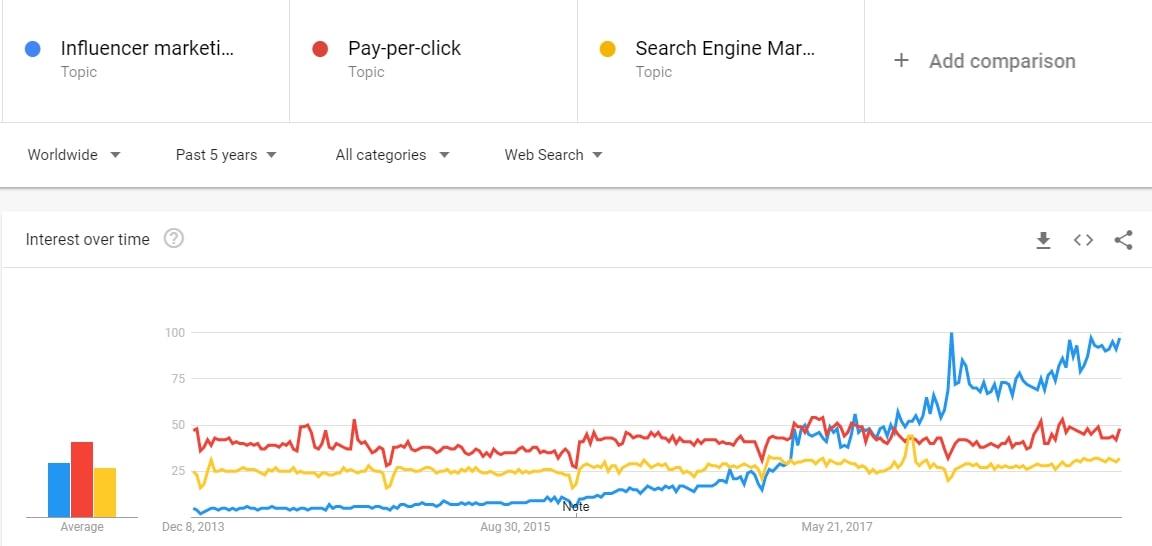
The challenge for businesses is how to use it effectively to get the best return on investment avoiding the pitfalls that marketers can fall into when running influencer marketing campaigns for brands.
Brands must recognise at the moment influencer marketing is vunerable as a small percentage of influencers are trying to take advantage and cheat the system.
The giant company Unilever worth $62.62 billion dollars weighed in on their thoughts about influencer marketing
Keith Weed CMCO of Unilever is responsible for the marketing and communications gave a speech earlier this year at Cannes
“the industry has recognised that it must take a stronger stance on the integrity and transparency of influencer marketing”.
Luis Di Como, executive vice president for global media, Unilever
“I believe we are still in the early stages [of influencer marketing] and we need to continue working with influencers to see what measurement and success look like to create a mutual benefit partnership rooted in transparency and trust.”
With the rise of smartphones in the past 10 years users are impulse buying straight from their phones as a direct result from influencers.
“The average person in the UK spends more than a day a week online, according to a landmark report on the impact of the “decade of the smartphone”.
Ofcom, which compiled the report, attributes a large part of the surge in time online to the rise of smartphones, which are now used by 78 per cent of the population compared with just 17 per cent in 2008, the year after the first iPhone was launched.” Telegraph
What is a Social Media Influencer
An influencer is an individual that uses popular social media networks examples being Facebook, Instagram and Youtube to build credibility in their specific industry by creating authentic, engaging content for the influencers audience of followers.
Celebrity Influencers
Kylie Jenner has leveraged her fame as an influencer first appearing on the TV show “Keeping Up with the Kardashians”. The young entrepreneur makes an estimated $1 million per sponsored post on Instagram with a cool 120 million followers, she is currently worth $900 million dollars. However celebrity influencers have a lower engagement rate.
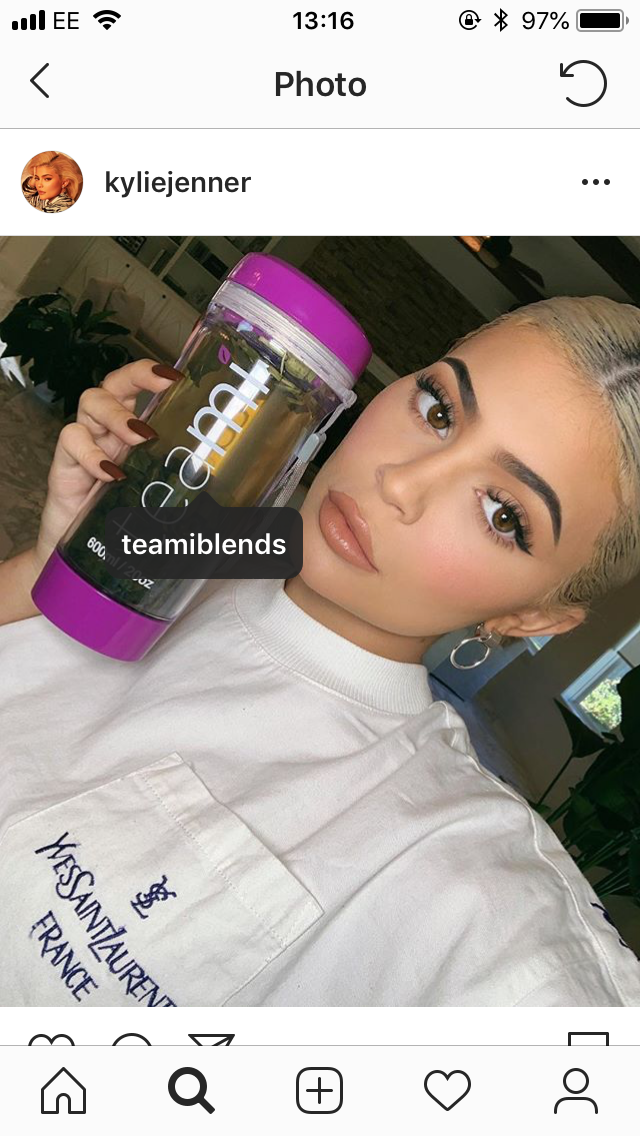
https://www.instagram.com/kyliejenner
On the flip side micro-influencers have a much smaller audience between 1-100K but have a far higher engagement.
The Key Finding
When creating an Influencer marketing strategy an important variable to take into account is the age demographic whether that be for generation Z, millennials or generation X. They use social media channels and other online activities differently.
Gen Z
Marketers need to be open minded with Gen Z (13-24 year olds), according to Adweek
“The spending power is estimated at somewhere between $29 billion and $143 billion, easily eclipsing that of the millennial generation.”
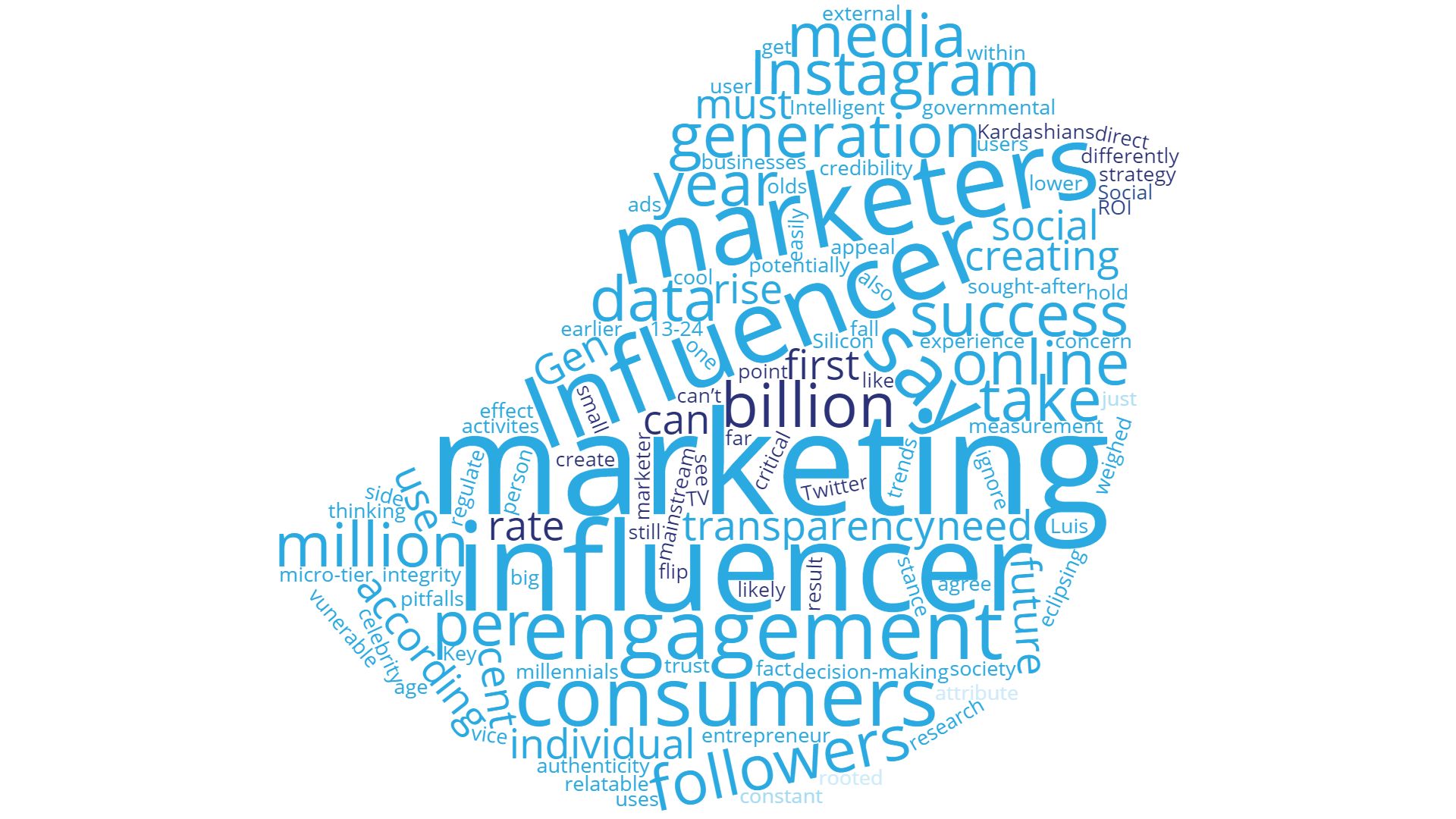
In a digital world that is growing at a rapid rate with the introduction of machine learning and AI research at Facebook, Instagram and Twitter. There are constant changes that effect these Silicon Valley companies whether that be algorithm updates, the inclusion of ads that can change the user experience or external factors where governmental bodies could potentially regulate these private companies in the future.
When it comes to planning your social media marketing strategy Facebook advertising has a proven track record to deliver measurable results at an affordable price to increase your sales giving you the peace of mind that investing in this paid advertising channel is suitable for businesses of all sizes.
Setting up a Facebook ads campaign uses a powerful targeting option allowing your business to be seen by thousands of people who have the ability to buy your product or service. You have the advantage of controlling your media budget.
The facts don’t lie Facebook is the world’s largest social media platform with over 2 billion worldwide monthly active users. UK stats show 45% of UK Facebook users check their account several times a day.
Facebook is set to make $4 billion with over 90% of Facebook’s advertising revenue now coming from mobile which shows businesses are adopting Facebook ads as a marketing channel.
Facebook is expanding its reach to advertise on the cross-platform messaging service for mobile devices WhatsApp.
General Facebook Statistics
(Facebook active users can be defined as those which have logged in during the last 30 days October 2018).
Why Facebook ads?
Looking at Facebook stats there is a high probability that your customer is already on the social media platform.
Ad targeting
You can target Facebook users by a number of different indicators to get a maximin ROI for example demographics.
Ads Targeted by Demographics
What Makes a Great Facebook Ad?
It must be visually compelling with a professional photo of the product. A picture tells a thousand words and when the ad is correctly structured it is likely to be remembered opposed to written ads.
The ad must be relevant to the end user. Facebook ads is built around the model of Cost Per Click (CPC). You spend money when a user clicks on the ad, so it has to be relevant to your target audience otherwise you are wasting money.
The ad must have a precise, focused call to action.
Example Call to Action buttons
Facebook Ad Formats
Facebook Business Pages Stats
60 million businesses have a business page worldwide
Top 10 Leading Brand pages on Facebook in the UK 2018
Facebook Competition
Ranked by monthly active users (millions)
From the data provided Facebook is the dominant social media network and should be included in your overall marketing strategy.
Facebooks ad platform is incredibly profitable if set up correctly and optimised.
Our digital marketing team is on hand to answer any of your questions.
Contact Us Today so we can help you grow your business.
Businesses are now having to incorporate an Instagram marketing strategy alongside other social media networks as a large segment of Instagram users are a potential buyer of the businesses product or service.
Instagram History
Instagram is a social media networking service allowing users to share photos and videos. The app was created in October 2010 by Kevin Systrom and Mike Krieger.
Mark Zuckerberg the CEO of Facebook saw the potential of Instagram and in April 2012 bought the company for $1 billion, with a user base of 30 million. The young start up company had 13 employees at the time with zero revenue coming in.
As of June 2018 Instagram has hit 1 billion users and is expected to amount $6 billion worth of advertising revenue in 2018, with some analysts predicting this number to increase to $20 billion by 2020.
Despite Facebooks recent setbacks regarding the public’s confidence in their privacy policy, data breaches, and fluctuating stock prices, advertisers haven’t shyed away from the platforms powerful influence it has on consumers.
There is an arms race between Facebook, Instagram and Snapchat as to how many minutes per day a user is spending on these social apps. In June 2018 new data from the online measurement company SimilarWeb was released.
“Instagram users in the U.S. spent nearly as much time in the Android app as Facebook users spent on their app.
On average, Instagram users spent 53 minutes per day with the Android app in June — just five minutes less than Facebook users spent with their app. Snapchat users spent 49.5 minutes in the Snap app, on average.”
Why a Business Should use Instagram Advertising
Instagram is currently the platform where specific businesses need to be found on when looking at paid search across the different social media platforms in regards to brand awareness, followers, engagement, driving business sales and generating leads. Instagram advertising has the potential to get your business ahead of your competitors.
“Instagramers look to be inspired, be creative, explore photos, videos and watch IGTV which includes content from brands and businesses on the social media network.
Instagram Audience
Interested in advertising your business on Instagram?
Our digital marketing team have a wealth of experience helping businesses with social media advertising in research, planning, creating original campaigns that deliver results for your business.
When it comes to local search marketing services pre internet one traditional way to search for a local service or product would be to reach for the yellow pages or local directory. Fast forward to today and for many people google is the default place to go to obtain information about services and products. One factor to help you increase local SERP for your website is to build local citations.
What is a Local Citation?
A local citation is any online mention of the name, address, postcode (NAP) and phone number for a local business. Citations can occur on local business directories, on websites and on social platforms. Citations help Internet users to discover local businesses and can also impact local search engine rankings. Local businesses can actively manage many citations to ensure data accuracy.
Citations can occur on:
Local generic business directories
Social and Review – oriented sites
Geo/Industry-Specific Niche Platforms
A business can look at building geographic and industry specific listing citations
An example citation directory of the restaurants industry in London
Across The Web
Local business citations can be built or earned by reaching out to a variety of publications such as blogs, news sites, maps, industry specific and government databases and accredited associations.
In addition to the essentional framework of a citation NAP name, address and postcode, citations can also include a number of other core features that enhance the user experience providing them with more information about the business.
The Most Important Citation Site Features
The state of Citations in 2018?
Local Search Experts
“The more prominent and consistent your business is online matters. When a search engine can see that you have more mentions than your competitors it only makes sense that this could affect the way the algorithm sees you as an entity. At the end of the day, getting citations done is a necessary evil. They are not as important as they were a few years ago, but the same thing holds true as it was back in the 90s. If you can get a link or a mention on a relevant website that your customers would care about, then go for it. The worst thing that can happen is you gain more traffic.” Ben Fisher
Google My Business (GMB)
Google has a specific feature when it comes to local search. Google my business is a free feature that make it easy for people to start building visibility in Google Search and Maps in your local community.
Core GMB listing Information
Business Name
For more information about Google My Business refer to the following article “Promote Your Business For Free With Google My Business Posts 2018″.
Our marketing department have a wealth of experience helping businesses improve their online presence through local marketing services.
More businesses in 2019 are including YouTube in their digital marketing strategy. The same marketing trend is occurring on other major social media networks – Facebook, Instagram, Snapchat and Linkedin.
Video content will account for 80% of all internet traffic by 2020. Video content gets up to 10x more reach and engagement compared to links and images
YouTube is increasing its international reach with a healthy audience due to the increased access to the internet for a number of reasons. Year on year first and developing world countries are spending billions of dollars in updating and building their national telecommunications infrastructure to increase broadband speed and reach.
The truth is that YouTube is the second largest social media platform after Facebook and it has broadly all the same generic features as other social media platforms and more:
Monthly active users:
YouTube Features
YouTube like all social media platforms can be used to link back to your site in numerous ways, helping to boost the traffic coming to your site as well as helping your SEO. YouTube videos are also indexed in the google search results
Let’s start with content. As with social media, you will need content for an audience to engage with. You have to create a “hook” at the start of the video. Your average viewer will decide to watch the video within the first 3-5 seconds due to the high volume of people watching video online and their short attention span.
70% of a videos performance will depend on how creative and authentic the content is.
Let’s start with content. As with social media, you will need something for an audience to engage with.
Where most people go wrong with YouTube content is that they try to make something that will go ‘viral’. In reality the chances of this happening are extremely slim. It is important to remember that just because you don’t have the biggest worldwide trending content doesn’t mean it isn’t attracting a new audience to your company.
Where most people go wrong with YouTube content is that they try to make something that will go ‘viral’.
Instead make something relevant. Whether it is a simple ‘how-to’ video, tutorials, unboxing, live streaming Q&A’s with your subscribers or something explaining your product or service, make sure that your brand comes across in a natural (and not too salesy) way.
Here are a few factors to consider when making your content:
YouTube can be a great place to advertise a product or service, it can persuade potential customers into buying your service over your competitors. So, make it something that stands out and get people engaged. Bring in you and your teams creativity or hire someone to help if you are not the creative type. Come up with something that will look great and get a relevant message across.
Like all of your content, your YouTube videos should reflect your business. So make sure that it has a clean professional look to it. It is worth investing some money and time into getting it right – you will still be spending a lot less than on a TV advert.
Once you have your content, there is more that you can do than just uploading it to YouTube. Here are few tips to get people to see the content you have created and use it to increase the traffic to your site.
Make sure that your videos are tagged to the right categories. YouTube does a great job of keeping its audience engaged, you will have probably noticed that you will be offered ‘related videos’ on the right-hand side of the page – take advantage of this. By making sure that your video is titled correctly and tagged to the right category your content can reach your target audience from similar videos they are already watching via related videos.
‘Favouriting’ other videos that align with your brand or product will mean that they show up on your channel, giving you a wider range of content on your channel homepage. Curating videos can be just as important as creating them so don’t be scared to share content from other brands that you align with.
The key objectives of creating content are to get people interested in your brand and onto your site. Your channel homepage can be linked back to the homepage of our site and the videos themselves.
Make sure that you have links in the description to lead potential customers back to site.
Annotations can also be added on top of the video at the end, again leading back to the site.
Make sure that if your video links to the relevant area of the site and not just the homepage. If the video is in reference to a certain product or service, make sure that it takes them directly to that page.
Your video shouldn’t just stay within YouTube. Post it on your website, share in on Facebook, Instagram, Linkedin, medium.com, Snapchat and Twitter, link to it from a newsletter – the more exposure it gets the more return you will get from it.
Now that you have content and few ideas for setting up your videos correctly we can move onto the bigger services that YouTube can offer your business.
YouTube offer a wide variety of advertising options including adverts after searches (similar to pay per click) and adverts before videos are played (pre-rolls). You can bid for YouTube keywords in the same way that you would bid on Google Adwords search network.
It is very easy to set up. All you will need is a video uploaded to YouTube, a Google Adwords account and then you are ready to launch your ad campaign.
Once you have everything set up you will be able to track your campaign with Adwords and the YouTube free analytics service, which lets you track the traffic your video gets as well as traffic generated from annotations.
If you want to learn more about getting started both YouTube and Google have produced fantastic guides for setting up your YouTube channel to help your business. If you would like to learn more about increasing your web presences don’t hesitate to give us a call on 01394 615 615 or email enquiries@infotex.co.uk
Thousands of digital marketers from around the world arrived for Brighton SEO with the knowledge they would have the privilege to learn and hear from the leading voices in the search marketing industry.
Again Kelvin Newman pulled off another successful and memorable search marketing conference.
It was great to meet, network and share ideas with digital marketing freelancers, executives, managers, CEO’s from agencies and passionate individuals who want to learn more about the industry and best business practices.
Of course, every year attendees love the goodies they get in their swag bags. Thanks to all the exhibitors and sponsors for their contributions.
There were many takeaways from the event, the overall trend is that SEO is still relevant more than ever and SEO will evolve over time adapting to new technologies, machine learning, A.I. and how humans will use the web in their daily personal and business life.
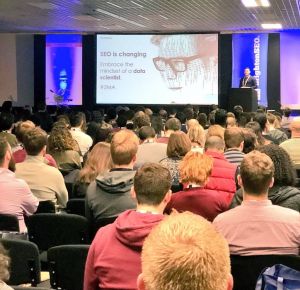
Chris from BrightLocal gave Infotex his summary of the days event:
“Every BrightonSEO is an invaluable source of knowledge and networking for the BrightLocal team, but this April’s conference was especially important for us. We’ve recently relocated to Brighton – and wanted to take this opportunity to really cement our position within the Brighton SEO community. It was great to sandwich the morning and afternoon sessions with a networking session – meeting loads of interesting digital marketers from Brighton, and further afield. We also made full use of having Greg Gifford in the UK – sending our newer recruits to his brilliant training session to brush up on local SEO (and 80s movies).
The sessions themselves were as interesting as ever – with a notable standout from Buzzsumo’s Steve Rayson and Brandwatch’s Giles Palmer exploring social sharing amid the content marketing boom.
It was also interesting to see reputation management gaining even more of the conference’s share of voice. We predict this will be one of the SEO trends most likely to grow in importance over the coming months.
A huge congrats to Kelvin for organising another excellent day – and making such a memorable entrance!”
Brightlocals chosen tweet of the day
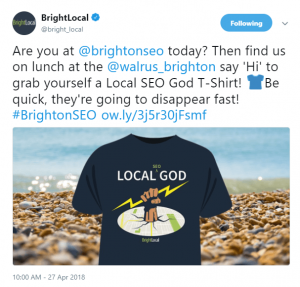
SEMrush
One of the tools the digital marketing team at Infotex use is SEMrush who gave us the following comment about the conference “We loved it, and as usual, it was a treasury of knowledge and an opportunity to meet with wonderful people”
SEMrush have compiled a detailed slideshare that contains the main highlights of the days conference.
Link Research Tools
I picked up a signed copy of “Spagetti Code” by Christoph C Cemper the founder of linkresearchtools.com for our digital marketing team.

Socialpubli.com
Lucila Rios from socialpubli talked to Infotex about micro-influencers. From socialpubli’s web site they highlight the importance of micro-influencers.
“At SocialPubli.com, we believe that we are all influencers. Today, it’s not just people who have millions of followers who help to win over consumers. It has also been proven that micro-influencers, ordinary people, can be a very important component in a marketing strategy.”

Pinterest is often overlooked as a website to boost your SEO rankings when considering digital marketing strategies. Pinterest is usually regarded as an inspirational site for those interested in food, interior design and fashion, but it’s so much more. If you aren’t using Pinterest, you could be missing out on an opportunity. With over 150 million users that continue to grow, here is your guide to using Pinterest to boost your SEO.
As with all websites and social media platforms, the content you produce needs to be good-quality and tailored to your audience. It’s no different with Pinterest. The backbone of the site is sharing new and unique content regularly. The SERPs monitor how many times a piece of content is shared, liked or re-pinned, so share content that’s unique, relevant or interesting. Pinterest provides a perfect platform to share blog posts, images, or products to help enhance your marketing strategy.
It’s important to make sure your business name is in the account name and username, along with a strong description about your company. Remember to include a number of searchable keywords, but don’t sacrifice quality; make sure it reads well.
Backlinks are an invaluable piece of SEO because search engines generate where your page ranks by considering the number of backlinks that lead people to your website. The more times your pin is viewed, the higher the backlinks to your website. You can even boost your backlinks further by inserting links into the captions of your photos and posts so that another backlink is created each time someone re-pins your image.
The trick behind keywords is finding the balance between not over-using them and using them effectively. Embrace the power of the #hashtag and use keywords in all of the descriptions of your pins. This will help increase your exposure on the web. You should also make sure your images are saved under your chosen keyword. An image won’t rank for “image2320”, but has a higher chance if it’s saved as its exact description.
Take advantage of Pinterest in-house analytics to track and analyse your progress so you can change your strategy in the future if needed.
If you’re interested in SEO strategies for your web design, then get in touch with us and we’d be happy to discuss all things SEO with you.
Discover how our team can help you on your journey.
Talk to us today